Balkinization
an unanticipated consequence of
Jack M. Balkin
Balkinization Symposiums: A Continuing List
E-mail:
Jack Balkin:
jackbalkin at yahoo.com
Bruce Ackerman
bruce.ackerman at yale.edu
Ian Ayres
ian.ayres at yale.edu
Corey Brettschneider
corey_brettschneider at brown.edu
Mary Dudziak
mary.l.dudziak at emory.edu
Joey Fishkin
joey.fishkin at gmail.com
Heather Gerken heather.gerken at yale.edu
Abbe Gluck abbe.gluck at yale.edu
Mark Graber
mgraber at law.umaryland.edu
Stephen Griffin
sgriffin at tulane.edu
Jonathan Hafetz
jonathan.hafetz at shu.edu
Jeremy Kessler
jkessler at law.columbia.edu
Andrew Koppelman
akoppelman at law.northwestern.edu
Marty Lederman
msl46 at law.georgetown.edu
Sanford Levinson
slevinson at law.utexas.edu
David Luban
david.luban at gmail.com
Gerard Magliocca
gmaglioc at iupui.edu
Jason Mazzone
mazzonej at illinois.edu
Linda McClain
lmcclain at bu.edu
John Mikhail
mikhail at law.georgetown.edu
Frank Pasquale
pasquale.frank at gmail.com
Nate Persily
npersily at gmail.com
Michael Stokes Paulsen
michaelstokespaulsen at gmail.com
Deborah Pearlstein
dpearlst at yu.edu
Rick Pildes
rick.pildes at nyu.edu
David Pozen
dpozen at law.columbia.edu
Richard Primus
raprimus at umich.edu
K. Sabeel Rahmansabeel.rahman at brooklaw.edu
Alice Ristroph
alice.ristroph at shu.edu
Neil Siegel
siegel at law.duke.edu
David Super
david.super at law.georgetown.edu
Brian Tamanaha
btamanaha at wulaw.wustl.edu
Nelson Tebbe
nelson.tebbe at brooklaw.edu
Mark Tushnet
mtushnet at law.harvard.edu
Adam Winkler
winkler at ucla.edu
Compendium of posts on Hobby Lobby and related cases
The Anti-Torture Memos: Balkinization Posts on Torture, Interrogation, Detention, War Powers, and OLC
The Anti-Torture Memos (arranged by topic)
Recent Posts
Employer Property, Employer Speech, and Worker Organizing
Just A Few Blogs
ACS Blog
Alas, a Blog
Althouse
Arts and Letters Daily
Atrios (Eschaton)
Bill of Health
Buzzflash.com
Buzz Machine
Cato at Liberty
Juan Cole (Informed Comment)
Concurring Opinions
The Constitution in 2020
Corrente
Crooked Timber
Daily Howler
Daily Kos
Dana Boyd
Brad DeLong
Digby (Hullabaloo)
Discriminations
Daniel Drezner
Kevin Drum (Mother Jones)
Electrolite
En Banc
Eunomia (Daniel Larison)
Fafblog
Michael Froomkin (Discourse.net)
GovLab (Beth Noveck)
Rick Hasen (Election Law)
History News Network
How Appealing
Ignatz (Sam Heldman)
The Importance of (Ernie Miller)
Infolaw
Instapundit
International Economic Law and Policy Blog
IntLawGrrls
Jacob Levy
Jesus' General
Jurisdynamics
The Kitchen Cabinet
Mark Kleiman
Law Blog Central
Larry Lessig
Lawyers, Guns and Money
Liberal Oasis
Brian Leiter's Law School Reports
The Leiter Reports
Marginal Revolution
Megan McArdle
Memeorandum
Metafilter
Mirror of Justice
The New Republic
Newseum
No More Mister Nice Blog
Brendan Nyhan
Opinio Juris
Orcinus
The Originalism Blog
Pandagon
Passport (Foreign Policy)
Overcoming Bias
Political Animal (Washington Monthly)
Political Theory Daily Review
Political Wire (Taegan Goddard)
The Poor Man
Virginia Postrel
Prawfsblawg
Public Reason
Jonathan Rauch
Raw Story
Redstate
ReligiousLeftLaw.com
Reporters Committee For Freedom of the Press
Reproductive Rights Blog
Rothman's Roadmap to the Right of Publicity
SCOTUS Blog
Seeing the Forest
Clay Shirky
The Shifted Librarian
The Situationist
Larry Solum (Legal Theory)
Andrew Sullivan
Talking Points Memo
Talk Left
Tapped
Tbogg
TechPresident
The Paper Chase (Jurist)
Tom Paine
Tom Tomorrow (This Modern World)
Eve Tushnet
Uggabugga
University of Chicago Law School Faculty Blog
Unqualified Offerings
The Volokh Conspiracy
War and Piece (Laura Rozen)
Wampum
Oliver Willis
Wonkette
Written Description
Matthew Yglesias
Yin
Your Choice of Feeds
1. XML
powered by
2. Atom Feed
3. RSS 2.0
Employer Property, Employer Speech, and Worker Organizing
Guest Blogger
For the Balkinization symposium on Free Speech in Crisis and the Limits of the First Amendment. Benjamin Sachs
Benjamin Sachs is Kestnbaum Professor of Labor and Industry at Harvard Law School. You can reach him by e-mail at bsachs@law.harvard.edu.
The
National Labor Relations Act grants private sector workers in the United States
a protected right to organize unions. The NLRA does other critical things: it
imposes a duty to bargain on employers and it insulates at least some forms of pickets
and strikes from employer retaliation, for example. But the statute’s essential
mission is protecting workers’ ability to organize, and that means protecting
workers’ ability to talk with each other and with organizers about unions.
Several
major threats to employee speech rights lurk in our system of labor law. One is
employer property rights, which act as a blunt limitation on employees’ ability
to talk about unionization: the law tells employees, in essence, they can’t speak
about unionization when, where, or with whom they’d like because doing so would
trench on employers’ right to control their private property. Because it’s ostensibly
private property that does the work of silencing employee speech, moreover,
First Amendment arguments are generally of no use to employees. A second threat
to employee speech comes from employer speech rights, which act as a
counterweight to rather than a limitation on employee speech rights: here the
law takes the position that employers have the right to make the case against
unionization so forcefully that no amount of employee speech may end up
mattering. Because it is the NLRB that places limits on such employer speech, moreover,
the First Amendment is always available to employers as a tool to attack limits
on their right to speak against unionization.
Across
the history of the NLRA, the weight that judges and the Board have given to
employer property and speech rights has swung with the political makeup of the
Board and the courts. The Trump Board (if there ever is one; as of this
writing, the President has yet to nominate anyone to replace Wilcox or fill the
other vacancy) and the Trump courts are sure to shift the balance in the
direction of employer property and speech, sacrificing employee speech – and
thus employee organizing prospects – in the process. And while the First
Amendment will be successfully invoked to uphold employer rights to speak
against unionization, the Amendment will be useless when it comes to protecting
employee speech rights against either employer property or the silencing
effects of overwhelming employer speech.
In
the early days of the Act, courts allowed employee speech rights to intrude into
employer property. For example, in 1945, the Supreme Court held that the NLRA’s
grant to workers of the right to engage in concerted activity implied a right
to talk with one another about unions at work. The importance of the
location of union speech was not lost on the Court: it understood that as a
practical matter (the workplace was the one location where all employees
gathered together) and as a symbolic matter (allowing union speech on company
property had the effect of normalizing that speech) enabling workers to discuss
unionization in the workplace would make or break many an organizing effort.
And so the Court in Republic Aviation held that employer property rights
had to bend to workers’ newly won statutory rights to organize. Modern echoes
of Republic Aviation can be found in the Obama Board’s Purple
Communications holding that the NLRA requires employers to let workers
access company email for organizing purposes.
The
contemporary trend, though, is decidedly in the other direction and will likely
accelerate during the new Trump administration. During the first Trump administration,
the Board repeatedly invoked employer property rights to curtail workers’ speech
rights. It, for example, reversed Purple Communications and held that
employers’ property rights in company email systems precluded a rule giving
workers the right to use email to discuss unionization or other forms of
collective action. And, in an opinion with huge implications for contemporary labor
markets, the Trump I Board held that subcontracted employees have zero right, when
they’re off duty, to talk union on company property.
But
the most famous, and the most far reaching, example comes from the 2021 Supreme
Court decision in Cedar Point. That case involved a California
Agricultural Labor Relations Act (ALRA) regulation allowing union organizers to
come onto farm owner property for a few hours a day to talk to farm workers
about unionizing. The regulation was essential to the success of the ALRA
because, given the migratory nature of farm labor, it was essentially
impossible for organizers to contact enough farm workers when they were not on
company property. Nonetheless, the Supreme Court found the regulation to violate
the Takings Clause. Why? Because the “right to exclude is one of the most
treasured rights of property ownership,” and the union access provision “appropriates
for the enjoyment of third parties [namely, unions] the owners’ right to
exclude.” Other regulations that protect employee speech at the expense of
employer property, including Republic Aviation itself, may now be vulnerable
to a similar holding.
Employer
property rights are thus a continual threat to the NLRA’s ability to protect
workers’ right to organize because property rights are invoked to extinguish
employee speech rights. Employer speech rights pose another such threat. Indeed,
the blockbuster, end-of term decision from the Biden Board, Amazon.com Services,
declaring captive audience meetings unlawful, turns not on property, but on employer
speech. The holding enacts a significant restriction on employer speech rights
as a means of ensuring employees a meaningful right to organize. But the
decision will likely be reversed by the Trump Board (again, assuming there is
one), in an opinion that will likely restore the right to hold captive audience
meetings on the ground that such meetings are protected employer speech.
Employer
rights to speak about unions were added to the NLRA in 1947 with the
Taft-Hartley amendments, through §8(c), a slightly odd provision that tells the
Board (and reviewing courts) that employer speech cannot be the basis of an
unfair labor practice unless that speech is coercive. In particular, §8(c)
says:
The expressing of any views, argument,
or opinion, or the dissemination thereof, whether in written, printed, graphic,
or visual form, shall not constitute or be evidence of an unfair labor practice
. . . if such expression contains no threat of reprisal or force or promise of
benefit.
Captive
audience meetings are ones for which employee attendance is mandatory and at
which employers deliver messages meant to discourage employees from voting in
favor of unionization. They are used with remarkable frequency: in recent
years, 85% of employers who waged any sort of anti-union campaign used captive
audience meetings, holding an average of 16 captive audience meetings
during the course of a single campaign. They’re also effective – the
correlation between captive audience meetings and unsuccessful unionization
efforts is well documented. Amazon certainly thought they worked: in the
anti-union campaign that gave rise to the Board’s opinion, the employer at one
point was holding a captive audience meeting every 45 minutes, six days
a week.
For
decades, Board doctrine dictated that captive audience meetings were lawful.
The reasoning of the seminal opinion on captives was thin but relied on section
§8(c): unless something the employer actually said during the meeting met the
definition of coercion – unless it amounted to a threat of reprisal or force –
the meeting was employer speech protected by §8(c). The Amazon Board
rejected this precedent and found captive audience meetings to constitute an
unfair labor practice.
In
holding captive audience meetings unlawful, the Biden Board needed a theory as
to why the meetings violated employees’ section 7 rights to engage in or
refrain from concerted activity for mutual aid and protection. The Board had
three such theories. One, it decided that employees’ §7 rights include the
right to be “let alone” about union activity, and being coerced to listen to an
employer’s position on the union question directly undermines this right. Two,
it held that captive audience meetings gave employers the ability to “observe
and surveil” employees during a discussion of section 7 activity, and such
surveillance has long been considered an unfair labor practice. Three, because
the employer has coerced employees into attending the meeting, the message
delivered during the meeting – “vote no” – is likely to take on a similarly
coercive character; if employees are coerced into listening to an anti-union
message, the message itself becomes coercion, and therefore is an unfair labor
practice.
The
holding is unquestionably a victory for worker organizing. But the Board’s
reasoning does raise some questions about speech in the labor organizing
context. For example, if employees have a right to be “let alone” when it comes
to speech about unionization, what does this imply about union rights to
contact and speak to workers about organizing?
But
it is the third theory that is most of interest here. The Board’s idea is that if
employees are coerced (by the threat of discipline or discharge) into attending
a meeting at which an employer speaks about unionization, then the employer’s
anti-union speech at the mandatory meeting itself becomes coercive,
irrespective of the content of the speech. Put differently, if an employer
coerces an employee into listening to a “vote no” message, then the “vote no”
message becomes coercive no matter what words the employer uses to convey its
message.
What
is appealing about the Board’s theory is the idea that the coercive character
of employer speech cannot be ascertained simply by reading the words that the
employer speaks. The context of the speech is dispositive. As the Supreme Court
has written (and as the Amazon Board quotes), in assessing the coercive
character of employer speech, the context which matters is the “economic
dependence of the employees on their employer.” And so we must take into
account “the necessary tendency of the [employees], because of that
relationship, to pick up intended implications of the [employer] that might be
more readily dismissed by a more disinterested ear.” It is undoubtedly true
that the coercive character of a captive audience meeting imbues the speech
delivered during such a meeting with greater coercive force than speech
delivered in most other contexts.
But
there is a complication with this part of the Board’s theory, too. If we take
the context of employer speech seriously, if we accept that the employees’
economic dependence on the employer imbues words spoken by the employer with coercive
force, we need a way to distinguish what employers say during captive audience
meetings from the things employers say at all other times. That’s difficult
because the entire employment relationship is imbued with the employer’s
coercive authority over the employee. There is no moment, no meeting, no
interview, no casual exchange, during which the employer doesn’t have
coercive authority over the employee and so no moment when employer speech
isn’t infused with coercive power. The problem is that this could imply that all
employer speech – at least all employer speech on the union question – is
coercive, thus rendering §8(c) a nullity: the section would protect a category
of speech (non-coercive employer speech about unionization) that simply doesn’t
exist.
The
Amazon Board does offer an answer to this conundrum: it clarifies that it
is the employer mandate, the order that employees attend the captive audience
meeting or face discipline, that renders the employer speech given during the
meeting coercive. Absent such a mandate to attend and listen, the Board thinks
we just have plain, noncoercive – and thus protected – employer speech. Accordingly,
the Amazon Board establishes a safe harbor and holds that if employers
make plain that attendance at “vote-no” meetings is in fact voluntary (if the
employer communicates that “[e]mployees will not be subject to discipline,
discharge, or other adverse consequences for failing to attend the meeting or
for leaving the meeting”) then there’s no unfair labor practice.
But
this answer depends on a premise that may be in tension with the rest of the Board’s
reasoning: that a meeting, at which the employer intends to convince employees
to vote no on unionization, will ever be perceived by employees as voluntary. After
all, no matter what the employer says or promises to do, it will know who
attends such meetings and who does not. And it will be able to, without making
the connection explicit, impose consequences on those who don’t attend. And so
why doesn’t the employees’ economic dependence on the employer render all such
meetings, in practice, mandatory? In other words, in the face of employer
assurances of voluntariness, why won’t employees “pick up the intended
implication” that would be lost on a more “disinterested ear” – the implication
being, quite plainly, that the meeting is mandatory no matter what the employer
says to comply with the Board’s safe harbor? And if all vote-no meetings are
mandatory, aren’t they all unfair labor practices?
The
upshot of this quandary ought to be a recognition that, in a context defined by
coercive economic power, employer speech never lacks coercive force. And this
recognition should prompt a reinterpretation, or revision, of §8(c) that moves
in the direction of limiting employer participation in union campaigns. The
problem is, limiting employer participation will violate both § 8(c) of the
statute as interpreted by the Trump Board and the First Amendment as
interpreted by Trump courts. In fact, while the First Amendment will be
incapable of saving employee speech from the invocation of employer property
rights, it will stand in the way of an NLRB rule requiring greater employer
neutrality on the union question.
Posted
9:30 AM
by Guest Blogger [link]
Books by Balkinization Bloggers

Linda C. McClain and Aziza Ahmed, The Routledge Companion to Gender and COVID-19 (Routledge, 2024)

David Pozen, The Constitution of the War on Drugs (Oxford University Press, 2024)

Jack M. Balkin, Memory and Authority: The Uses of History in Constitutional Interpretation (Yale University Press, 2024)
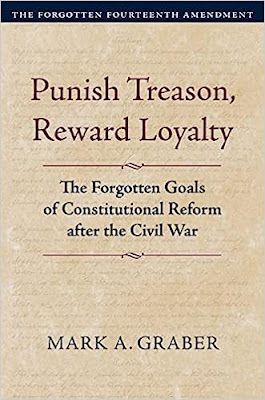
Mark A. Graber, Punish Treason, Reward Loyalty: The Forgotten Goals of Constitutional Reform after the Civil War (University of Kansas Press, 2023)
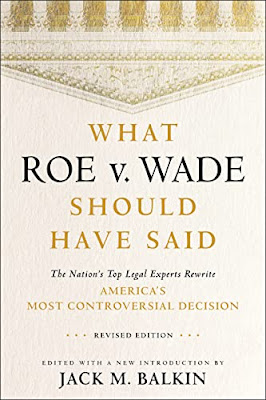
Jack M. Balkin, What Roe v. Wade Should Have Said: The Nation's Top Legal Experts Rewrite America's Most Controversial Decision - Revised Edition (NYU Press, 2023)

Andrew Koppelman, Burning Down the House: How Libertarian Philosophy Was Corrupted by Delusion and Greed (St. Martin’s Press, 2022)

Gerard N. Magliocca, Washington's Heir: The Life of Justice Bushrod Washington (Oxford University Press, 2022)
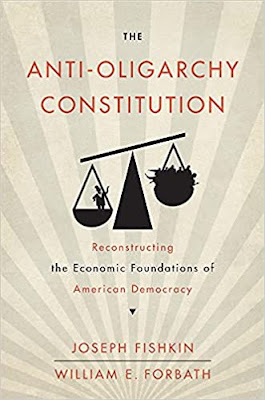
Joseph Fishkin and William E. Forbath, The Anti-Oligarchy Constitution: Reconstructing the Economic Foundations of American Democracy (Harvard University Press, 2022)
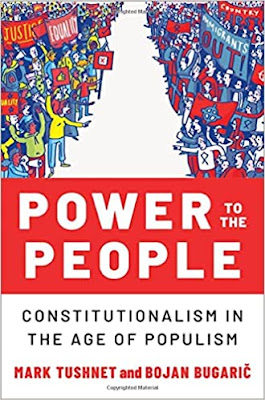
Mark Tushnet and Bojan Bugaric, Power to the People: Constitutionalism in the Age of Populism (Oxford University Press 2021).

Mark Philip Bradley and Mary L. Dudziak, eds., Making the Forever War: Marilyn B. Young on the Culture and Politics of American Militarism Culture and Politics in the Cold War and Beyond (University of Massachusetts Press, 2021).

Jack M. Balkin, What Obergefell v. Hodges Should Have Said: The Nation's Top Legal Experts Rewrite America's Same-Sex Marriage Decision (Yale University Press, 2020)

Frank Pasquale, New Laws of Robotics: Defending Human Expertise in the Age of AI (Belknap Press, 2020)

Jack M. Balkin, The Cycles of Constitutional Time (Oxford University Press, 2020)

Mark Tushnet, Taking Back the Constitution: Activist Judges and the Next Age of American Law (Yale University Press 2020).

Andrew Koppelman, Gay Rights vs. Religious Liberty?: The Unnecessary Conflict (Oxford University Press, 2020)

Ezekiel J Emanuel and Abbe R. Gluck, The Trillion Dollar Revolution: How the Affordable Care Act Transformed Politics, Law, and Health Care in America (PublicAffairs, 2020)

Linda C. McClain, Who's the Bigot?: Learning from Conflicts over Marriage and Civil Rights Law (Oxford University Press, 2020)
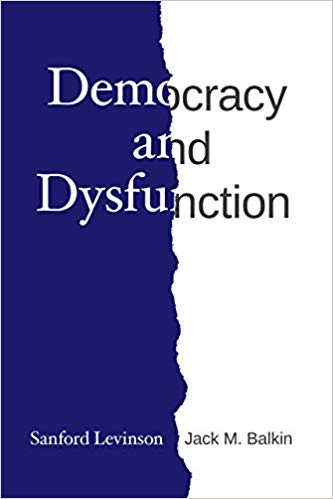
Sanford Levinson and Jack M. Balkin, Democracy and Dysfunction (University of Chicago Press, 2019)

Sanford Levinson, Written in Stone: Public Monuments in Changing Societies (Duke University Press 2018)

Mark A. Graber, Sanford Levinson, and Mark Tushnet, eds., Constitutional Democracy in Crisis? (Oxford University Press 2018)

Gerard Magliocca, The Heart of the Constitution: How the Bill of Rights became the Bill of Rights (Oxford University Press, 2018)

Cynthia Levinson and Sanford Levinson, Fault Lines in the Constitution: The Framers, Their Fights, and the Flaws that Affect Us Today (Peachtree Publishers, 2017)

Brian Z. Tamanaha, A Realistic Theory of Law (Cambridge University Press 2017)

Sanford Levinson, Nullification and Secession in Modern Constitutional Thought (University Press of Kansas 2016)

Sanford Levinson, An Argument Open to All: Reading The Federalist in the 21st Century (Yale University Press 2015)

Stephen M. Griffin, Broken Trust: Dysfunctional Government and Constitutional Reform (University Press of Kansas, 2015)

Frank Pasquale, The Black Box Society: The Secret Algorithms That Control Money and Information (Harvard University Press, 2015)

Bruce Ackerman, We the People, Volume 3: The Civil Rights Revolution (Harvard University Press, 2014)
Balkinization Symposium on We the People, Volume 3: The Civil Rights Revolution

Joseph Fishkin, Bottlenecks: A New Theory of Equal Opportunity (Oxford University Press, 2014)

Mark A. Graber, A New Introduction to American Constitutionalism (Oxford University Press, 2013)

John Mikhail, Elements of Moral Cognition: Rawls' Linguistic Analogy and the Cognitive Science of Moral and Legal Judgment (Cambridge University Press, 2013)

Gerard N. Magliocca, American Founding Son: John Bingham and the Invention of the Fourteenth Amendment (New York University Press, 2013)

Stephen M. Griffin, Long Wars and the Constitution (Harvard University Press, 2013)

Andrew Koppelman, The Tough Luck Constitution and the Assault on Health Care Reform (Oxford University Press, 2013)

James E. Fleming and Linda C. McClain, Ordered Liberty: Rights, Responsibilities, and Virtues (Harvard University Press, 2013)
Balkinization Symposium on Ordered Liberty: Rights, Responsibilities, and Virtues

Andrew Koppelman, Defending American Religious Neutrality (Harvard University Press, 2013)

Brian Z. Tamanaha, Failing Law Schools (University of Chicago Press, 2012)

Sanford Levinson, Framed: America's 51 Constitutions and the Crisis of Governance (Oxford University Press, 2012)

Linda C. McClain and Joanna L. Grossman, Gender Equality: Dimensions of Women's Equal Citizenship (Cambridge University Press, 2012)

Mary Dudziak, War Time: An Idea, Its History, Its Consequences (Oxford University Press, 2012)

Jack M. Balkin, Living Originalism (Harvard University Press, 2011)

Jason Mazzone, Copyfraud and Other Abuses of Intellectual Property Law (Stanford University Press, 2011)

Richard W. Garnett and Andrew Koppelman, First Amendment Stories, (Foundation Press 2011)

Jack M. Balkin, Constitutional Redemption: Political Faith in an Unjust World (Harvard University Press, 2011)

Gerard Magliocca, The Tragedy of William Jennings Bryan: Constitutional Law and the Politics of Backlash (Yale University Press, 2011)

Bernard Harcourt, The Illusion of Free Markets: Punishment and the Myth of Natural Order (Harvard University Press, 2010)

Bruce Ackerman, The Decline and Fall of the American Republic (Harvard University Press, 2010)
Balkinization Symposium on The Decline and Fall of the American Republic

Ian Ayres. Carrots and Sticks: Unlock the Power of Incentives to Get Things Done (Bantam Books, 2010)

Mark Tushnet, Why the Constitution Matters (Yale University Press 2010)
Ian Ayres and Barry Nalebuff: Lifecycle Investing: A New, Safe, and Audacious Way to Improve the Performance of Your Retirement Portfolio (Basic Books, 2010)
.jpg)
Jack M. Balkin, The Laws of Change: I Ching and the Philosophy of Life (2d Edition, Sybil Creek Press 2009)

Brian Z. Tamanaha, Beyond the Formalist-Realist Divide: The Role of Politics in Judging (Princeton University Press 2009)
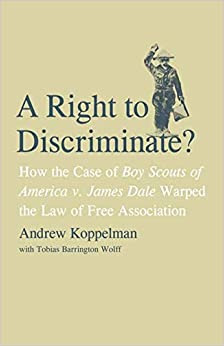
Andrew Koppelman and Tobias Barrington Wolff, A Right to Discriminate?: How the Case of Boy Scouts of America v. James Dale Warped the Law of Free Association (Yale University Press 2009)

Jack M. Balkin and Reva B. Siegel, The Constitution in 2020 (Oxford University Press 2009)
Heather K. Gerken, The Democracy Index: Why Our Election System Is Failing and How to Fix It (Princeton University Press 2009)

Mary Dudziak, Exporting American Dreams: Thurgood Marshall's African Journey (Oxford University Press 2008)

David Luban, Legal Ethics and Human Dignity (Cambridge Univ. Press 2007)

Ian Ayres, Super Crunchers: Why Thinking-By-Numbers is the New Way to be Smart (Bantam 2007)

Jack M. Balkin, James Grimmelmann, Eddan Katz, Nimrod Kozlovski, Shlomit Wagman and Tal Zarsky, eds., Cybercrime: Digital Cops in a Networked Environment (N.Y.U. Press 2007)

Jack M. Balkin and Beth Simone Noveck, The State of Play: Law, Games, and Virtual Worlds (N.Y.U. Press 2006)

Andrew Koppelman, Same Sex, Different States: When Same-Sex Marriages Cross State Lines (Yale University Press 2006)
Brian Tamanaha, Law as a Means to an End (Cambridge University Press 2006)
Sanford Levinson, Our Undemocratic Constitution (Oxford University Press 2006)
Mark Graber, Dred Scott and the Problem of Constitutional Evil (Cambridge University Press 2006)
Jack M. Balkin, ed., What Roe v. Wade Should Have Said (N.Y.U. Press 2005)
Sanford Levinson, ed., Torture: A Collection (Oxford University Press 2004)
Balkin.com homepage
Bibliography
Conlaw.net
Cultural Software
Writings
Opeds
The Information Society Project
BrownvBoard.com
Useful Links
Syllabi and Exams